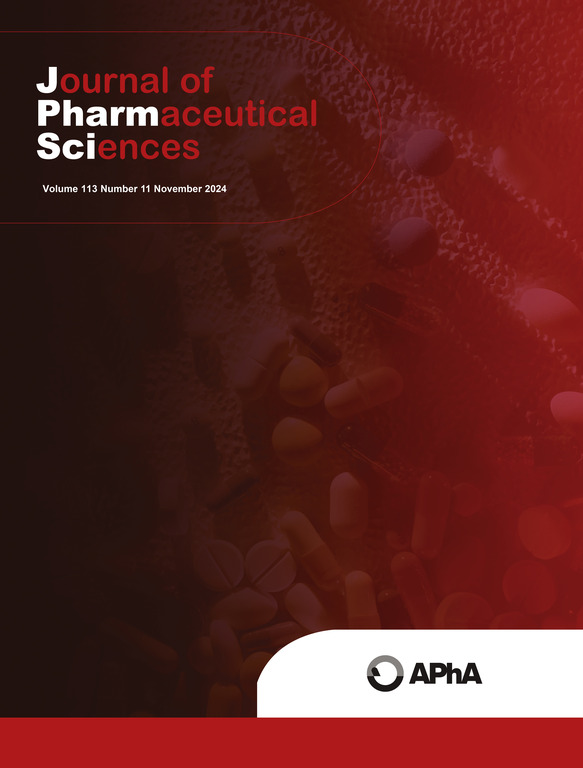Combating pharmaceutical folklore: No alkyl-sulfonate impurities formed during the synthesis of sulfonate salts
IF 3.7
3区 医学
Q2 CHEMISTRY, MEDICINAL
引用次数: 0
Abstract
Whilst an alcohol can be forced to react with a sulfonic acid, this reaction produces minimal ester conversion even under extreme conditions (anhydrous, very low pH) that bear no resemblance to the mild synthetic procedures typically used for the formation of sulfonate salts of basic drugs. The latter involve the addition of a molar equivalent of pharma-grade sulfonic acid to the base form of a drug substance (pKa ≥3.5), dissolved or suspended in an alcohol solvent, normally ethanol (pKa -2). All added acid is neutralized, and so there is no potential for ester formation. Many drug-substance base forms are polyamines, thus preventing the generation of acidic reaction conditions even in the presence of excess of sulfonic acid. Despite the experimental evidence, the perception that short-chain mutagenic alkyl sulfonates are “potential impurities” in sulfonate salts is widely held within regulatory bodies. This stance implies that a mechanistically-impossible reaction can occur: nucleophilic displacement by sulfonate anion of the hydroxyl group from a short-chain alcohol under non-acidic conditions. The European Pharmacopoeia (Ph.Eur.) and the British Pharmacopoeia (BP) include “production statements” in monographs for sulfonate-salt drug substances requiring a “risk assessment” of the production process. Neither body has provided supporting evidence. Information obtained from the BP via Freedom of Information requests showed that expert-group discussions were characterised by a range of ad-hoc opinions rather than an evidence-based evaluation of mechanism, kinetics and experimental data. Alternative sources of alkyl-sulfonate impurities such as methyl methanesulfonate (MMS) arising from the use of impure, reagent-grade methanesulfonic acid (MSA) were not considered. Both BP and Ph.Eur. production statements appear to be based on policy rather than scientific evidence and so should be discontinued.

打击制药业的民间传说:磺酸盐合成过程中不会产生烷基磺酸盐杂质。
虽然可以强迫酒精与磺酸发生反应,但即使在极端条件下(无水、pH 值极低),这种反应也只能产生极少的酯转化,与通常用于形成碱性药物磺酸盐的温和合成程序毫无相似之处。后者是在溶解或悬浮于醇溶剂(通常为乙醇,pKa -2)中的药物物质(pKa ≥3.5)的基础形式中加入摩尔当量的医药级磺酸。所有添加的酸都会被中和,因此没有形成酯的可能性。许多药物物质的碱基形式是多胺,因此即使在磺酸过量的情况下也不会产生酸性反应条件。尽管有实验证据,但监管机构普遍认为短链致突变烷基磺酸盐是磺酸盐中的 "潜在杂质"。这种立场意味着可能会发生一种机械上不可能发生的反应:在非酸性条件下,磺酸盐阴离子对短链醇羟基的亲核置换。欧洲药典》(Ph.Eur.)和《英国药典》(BP)在磺酸盐盐类药物的各论中列入了 "生产说明",要求对生产过程进行 "风险评估"。这两个机构都没有提供支持证据。通过 "信息自由 "申请从英国药典获得的信息显示,专家组讨论的特点是提出一系列临时意见,而不是对机理、动力学和实验数据进行循证评估。没有考虑烷基磺酸盐杂质的其他来源,如使用不纯的试剂级甲磺酸 (MSA) 而产生的甲磺酸甲酯 (MMS)。英国石油公司和欧洲博士公司的生产声明似乎都是基于政策而非科学证据,因此应予停止。
本文章由计算机程序翻译,如有差异,请以英文原文为准。
求助全文
约1分钟内获得全文
求助全文
来源期刊
CiteScore
7.30
自引率
13.20%
发文量
367
审稿时长
33 days
期刊介绍:
The Journal of Pharmaceutical Sciences will publish original research papers, original research notes, invited topical reviews (including Minireviews), and editorial commentary and news. The area of focus shall be concepts in basic pharmaceutical science and such topics as chemical processing of pharmaceuticals, including crystallization, lyophilization, chemical stability of drugs, pharmacokinetics, biopharmaceutics, pharmacodynamics, pro-drug developments, metabolic disposition of bioactive agents, dosage form design, protein-peptide chemistry and biotechnology specifically as these relate to pharmaceutical technology, and targeted drug delivery.

 求助内容:
求助内容: 应助结果提醒方式:
应助结果提醒方式:


